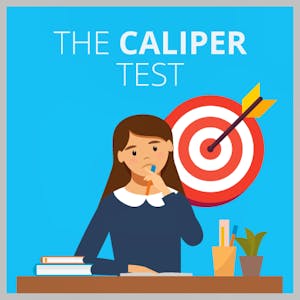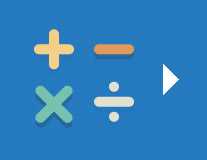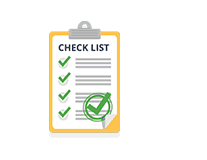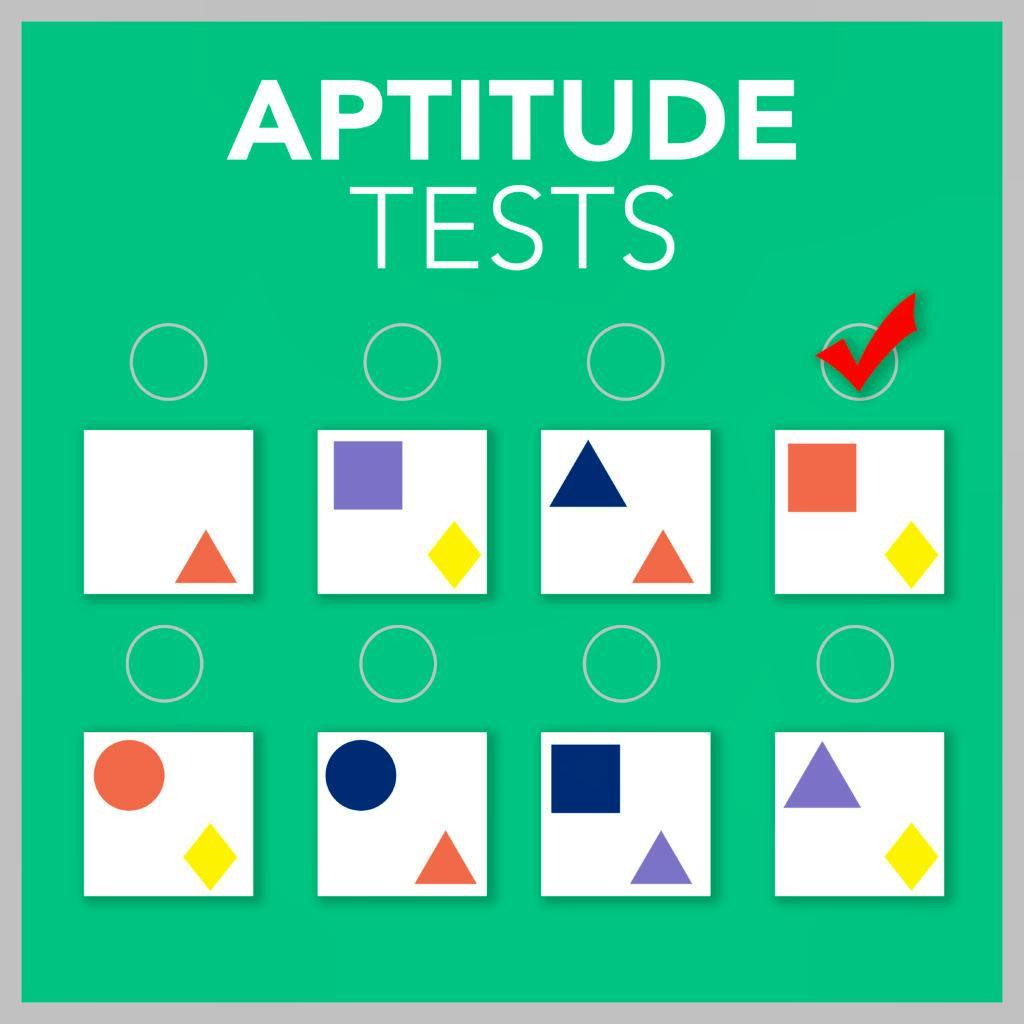Caliper Test and Assessment Tips
Updated November 18, 2023


The Caliper test is an assessment used by employers to gain a better understanding of a candidate’s personality traits, cognitive abilities and motivations.
The Caliper test is used to help employers predict a candidate's suitability for a role.
In this article, we'll take a detailed look at what the Caliper test is and how it is scored.
We’ll also share some tips on how you can perform at your best when taking your Caliper assessment test.
What Is a Caliper Assessment Test?
Developed over 50 years ago by the talent-management company Caliper, the Caliper test – also known as the Caliper Profile test or PSI Caliper assessment – is a popular recruitment tool used by employers in certain industries, such as sales, for particular jobs, such as management-level roles.
For these skilled professional, graduate and management-level positions, employers want to ensure that the candidates they hire demonstrate the necessary skills, abilities and personality traits to succeed in a role.
The Caliper test is an unbiased, objective measure of whether a candidate is a good fit for the role and organization they have applied for.
It provides information about someone’s personality, characteristics, motivations and ability to learn when working on the job.
The test also assesses candidates’ cognitive abilities, in other words, their capacity to:
- Learn
- Memorize
- Demonstrate logical reasoning
- Focus on tasks
Why Do Employers Use the Caliper Test?
For an employer, a significant benefit of using the Caliper test as part of the recruitment process is that a candidate's Caliper assessment answers uncover their personality traits and behavioral preferences at work.
From the Caliper assessment results and information gained from other parts of the recruitment process, employers can see where a person’s strengths lie, their motivations and behaviors in the workplace, and whether they are suitable for the role.
For organizations that value cultural fit as highly as abilities, a candidate's Caliper profile gives employers additional objective information, helping them distinguish between those with similar abilities and experiences when making hiring decisions.
Caliper Assessment Format: Questions & Answers
The Caliper assessment can be administered in two formats:
- Paper-based
- Online
The format candidates complete will depend on the employer's recruitment process format.
The online and paper-based Caliper tests are untimed and have 180 questions.
All questions are multiple-choice, and each must be completed before the test can be scored. Candidates usually find that the Caliper test takes two to three hours to complete.
The Caliper test is split into two sections:
- Caliper Personality Test
- Caliper Cognitive Test
Within these sections, candidates are assessed in seven areas:
- Decision-making – How well you adapt and come up with new ideas
- Problem-solving – Your aptitude in dealing with complex situations and your detail orientation when solving problems
- Self-management – How well you can focus on the duties and responsibilities of your role
- Process management – Your focus on the tasks you have been given and following the correct procedures when completing these
- Interpersonal dynamics – How you form working relationships, get along with people, trust others and work together to contribute to a positive working environment
- Leadership – Your empathy when dealing with others, whether you are true to your principles and what you believe is right, whether you exercise caution and risk when taking on new projects
- Communication – How well you communicate when working with others, your empathy and communication style in challenging situations
The format and structure of the questions vary across the test, depending on the area being assessed.
For example, some questions may be in text format, others numerical, with some problem-solving or puzzle-based questions.
Personality Section of the Caliper Assessment
For the personality and behavioral questions of the Caliper test, there are no right or wrong answers.
The test assesses 21 different behavioral preferences and traits. These determine your characteristics, motivations, strengths and limitations when working on the job.
There are typically three different types of questions in this section:
- Least and most questions
- Rating questions
While there are no right or wrong answers to these questions, it is worth considering the type of role you’re applying for when answering them.
'Least and Most' Questions
Caliper tests begin with questions that assess a candidate’s personality.
In this Caliper personality test section, you are presented with questions in the form of statements.
You are asked which of the statements best describes you or is most reflective of the way you prefer to behave and which one least describes you or the way you choose to behave.
When considering the statements below, pick the one that most describes you and the one that least describes you.
a) I like to ask questions when being shown a new process or task.
b) I often find that others start a task without being clear on what they are being asked to do.
c) I enjoy helping others.
d) I sometimes take on too much and struggle to complete the tasks I have committed to.
Using a scale of 1 (strongly agree) to 7 (strongly disagree), mark your response to each of the following statements:
a) I am often expressing my ideas in team meetings.
b) I am usually the one to take the lead in organizing a team's activities.
c) I find constructive feedback affects my confidence.
d) I enjoy working to tight deadlines.
Cognitive Ability Section of the Caliper Test
The cognitive ability section of the Caliper assessment looks at a person’s ability when solving problems.
That is, whether they use abstract reasoning, demonstrate logical reasoning and can learn new information and skills relevant to the role they have applied for.
All questions in each section must be completed before the test can be scored and a candidate's Caliper profile generated.
Questions in this section are presented in different formats as follows:
Visual Analogy
Visual analogy questions are presented in the form of shapes or diagrams.
You need to determine the relationship between shapes, patterns, or pairs of shapes or patterns, then use this rule to select which of the multiple-choice answers fits or comes next according to the pattern you've identified.
Number Series
In this type of question, you are presented with a series of numbers. Your task is to select the missing number in the series from the list of numbers given.
What is the missing number in this sequence?
5 | 9 | ? | 33 | 65 | 129
a) 10
b) 17
c) 11
d) 16
Matrix Completion
These questions are presented as a matrix of nine boxes.
In eight of the boxes, there is an image or shape; in one box, there is a question mark.
Your task is to decipher the pattern that links these shapes and select which of the shapes given as multiple-choice answers is the correct one to insert into the matrix.
Series Completion
This type of question is similar to the number series type, but it uses shapes instead of numbers.
Questions are presented as a sequence of shapes. You need to determine the relationship between the shapes in the series by considering both the elements and the shape.
The missing shape may be at the end or in the middle of the sequence. Using the pattern you have identified, determine the missing shape.
How Is the Caliper Assessment Scored?
The Caliper test is a well-established assessment tool used by many employers to determine a candidate’s abilities, behaviors, traits and general fit for a role.
When scoring the test, the Caliper assessment answers are reviewed against a specific job model that aligns with the role you have applied for:
- Management roles – Director, team leader, or senior positions such as head of a specific specialism
- Sales roles – Account development, account managers or recruiters
- Service-based roles – Customer service
- Technical roles – Programmers, developers, data security, analysts
- Other roles – Nursing, teaching
The Caliper profile reveals a candidate's traits, behaviors and competencies in the context of the job model.
The Caliper assessment scores cover 21 different traits. These traits are used to determine your preferences and your attitude at work.
The behaviors determine how you act in a working environment, while the competency results reveal your abilities and are used to predict how you will perform in the role.
Candidates are awarded an overall score on a scale of 1–99, known as a ‘job-fit score’.
You can’t fail a Caliper test, but the scores are compared against the test scores of those who are successful in the role (a norm group).
This comparison indicates whether a candidate's score is a good score and whether they are likely to perform well in the role. The higher the score, the better the job match.
An indication of what job-fit scores mean follows:
- Over 80 – A strong fit for the role
- 60–79 – A good fit for the role, but the candidate may need support in some aspects
- 40–59 – The candidate may struggle to do well in the role and may not be a good fit
- Below 40 – The candidate is unlikely to do well in the role
In addition to your overall score, you will receive a complete Caliper personality test profile. This is a full review of how you have performed in the competency areas critical for your role's success.
Also included is information on the behavioral areas of strength and development relevant to the role. You will also be shown how your score for each of the 21 individual traits compares with those in the norm group.
Tips for Taking the Caliper Assessment
Before sitting a Caliper test, familiarize yourself with the test format by taking paid for or free Caliper assessment practice tests.
While the test determines your inherent aptitudes, personality and behaviors, becoming familiar with the format and the style of questioning means your natural characteristics and abilities can come through.
Here are some of our top tips when sitting a Caliper test:
Step 1. Be Honest
The Caliper assessment measures how relevant your personality is to the role.
Questions are asked in different ways, each assessing the same behavior, trait or competency.
To ensure you portray an authentic version of yourself, your Caliper test answers must be honest, while keeping in mind the type of role you have applied for.
Step 2. Take Caliper Practice Tests Online
There are several online caliper assessment practice tests that can help you to become familiar with each style of question in the Caliper test.
By trying out Caliper assessment practice tests, it allows you to understand what exactly each type of question is asking. It will also help you to calm your nerves when taking the actual test, so you can perform to the best of your ability.
Step 3. Understand the Role
Caliper assessment answers are reviewed against a specific job model.
Understanding the role and whether you are suited to the position in terms of your attributes, competencies and behaviors will help you to answer the questions tailored to you and the role.
Step 4. Take Your Time
There is no time limit for the completion of the Caliper assessment.
Make sure you take your time to read the questions thoroughly. Understanding what is being asked of you is essential if you are to interpret the question correctly.
Step 5. Don't Get Caught Up on One Question
When answering questions in the personality section of the test, it is advisable to not spend too long on a question, but make sure you have read each statement so you can select the right response.
Don't try and second guess what you think the employer wants to hear; when it comes to these Caliper assessment answers, just be honest.
Step 6. Improve Your Cognitive Abilities
To improve your natural cognitive abilities, practice number puzzles, brain teasers or memory games.
Sharpening your skills and mental focus in these areas will allow you to do better on these Caliper test questions, letting your natural ability shine through.
The Caliper test is an assessment used by employers to better understand a candidate’s personality, traits, behaviors and cognitive abilities in the context of the role they have applied for.
Employers use the Caliper assessment to predict on-the-job performance and whether a candidate is a good fit for the position.
The Caliper assessment is designed to give an overview of a person’s traits, behaviors and cognitive abilities.
Some candidates may find the Caliper test more challenging than others if they have not taken Caliper practice tests or do not possess the inherent personality and abilities needed for success on the job.
The Caliper test comprises 180 questions. Each question must be completed for the test to be scored.
The Caliper test comprises 180 questions. Each question must be completed for the test to be scored.
Preparing thoroughly for the Caliper test before sitting the actual assessment is advisable.
There are several resources that you can use; we recommend JobtestPrep.
Your Caliper assessment score is given on a scale of 1–99 and referred to as a job-fit score. The higher the score, the more of a match you are for the job you have applied for.
A job-fit score over 60 indicates that the candidate would be a good fit but may need some support in some aspects of the role.
Those who attain a score of over 80 are deemed to be a good match for the role, requiring little support.
The Caliper assessment is used by many companies across different sectors such as marketing, teaching, nursing and management-level positions.
The stage at which the Caliper assessment is given will differ from organization to organization.
To determine the next step after the Caliper assessment, we advise contacting your recruiter.
The Caliper assessment is untimed, but in general, candidates take two to three hours to complete all the questions.
Note that all questions must be answered for the test to be scored.
A Caliper test aims to determine whether a candidate is a good match for the role they have applied for.
It enables employers to determine a person’s suitability for the role by assessing the key traits, behaviors and competencies required for success on the job.
To practice Caliper assessment questions, we advise visiting JobTestPrep where you will find a range of sample tests.
Employers who require candidates to sit a Caliper assessment as part of the recruitment process for a role will have their own retake policies.
We advise contacting the recruiter for the position you have applied for to determine if you can retake the test and, if so, when you would be permitted to do so.
In addition to this article, there are several guides on passing the Caliper test. We advise referring to the following sources and looking for Caliper assessment practice tests online:
Final Thoughts
The Caliper test is a popular type of personality assessment used by a range of companies.
The test is split into two sections that assess a candidate’s personality and cognitive abilities. The results are used to determine a person’s job-fit score and whether they are a good match for the role they have applied for.
Sitting a Caliper test may seem daunting at first, but it may help to consider the type of role you’re applying for and the purpose of the test. Keeping calm and ensuring that you have sat practice tests ensures that you perform to the best of your natural ability.











